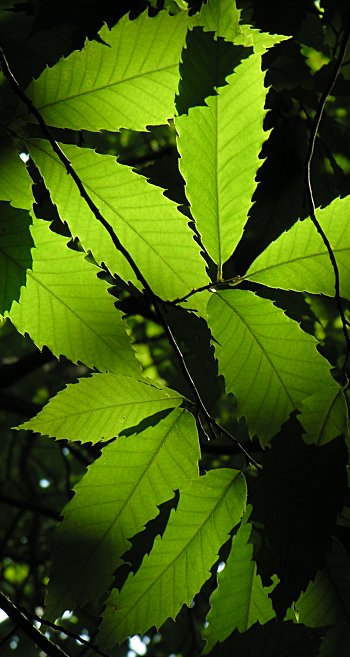Castanea Dentata Redux
 Reclaiming mined lands-good. Reintroducing a nearly extinct species of tree that once was a foundation of the Appalachian economy-even better. Combining the two efforts to not only reclaim, but reforest Appalachian mountains scarred by mining activities, totally AWESOME!
Reclaiming mined lands-good. Reintroducing a nearly extinct species of tree that once was a foundation of the Appalachian economy-even better. Combining the two efforts to not only reclaim, but reforest Appalachian mountains scarred by mining activities, totally AWESOME!
This post by jdub over at Appalachian Voice Front Porch Blog recently caught my attention. With some good links and thoughts for consideration, it highlights reclamation efforts that are coinciding with the renaissance of the American Chestnut.




2 comments:
At one point the region had 200 million acres of chestnut trees! The story of how they disappeared is heartrending:
http://appalachianhistory.blogspot.com/2007/02/200-million-acres-of-chestnut-trees.html
I was visiting family near Asheville in May. We had a Memorial Day picnic at Mt. Pisgah on the Blue Ridge Parkway. In the woods near our picnic site (not far from Pisgah Inn) I found several American Chestnut trees. They still exist in WNC. They can also be found here in Pennsylvania, where I now live. The difference is that, instead of being the mighty giants of the past, they are now reduced to small trees of no more than 20'. Unfortunately, they die before they can produce chestnuts. That means they occur solely as root sprouts and cannot reclaim their domain.
Your entry from Oct. 21, 2006 is very good. Penn State University also has a backcross program trying to splice in the Chinese Chestnut blight resistance into the Castanea dentata genome. Good luck to all efforts to restore this awesome giant. As a Forestry graduate from NCSU I appreciate your post on this. Thanks.
Post a Comment